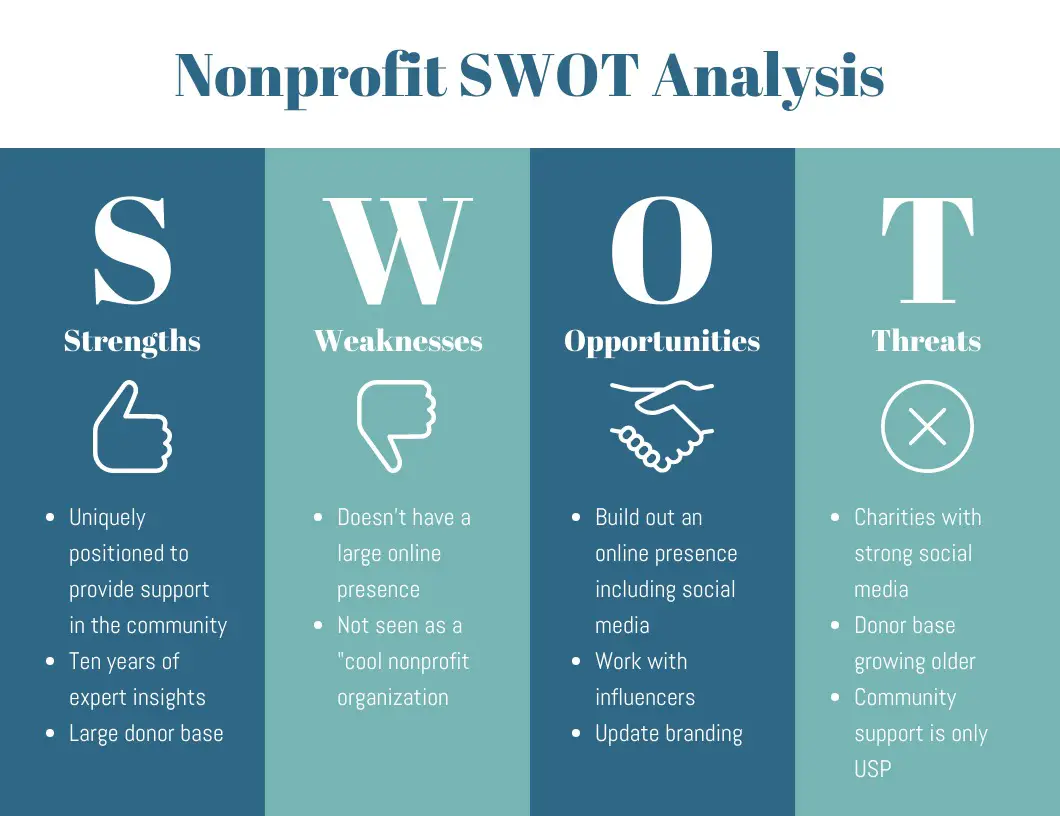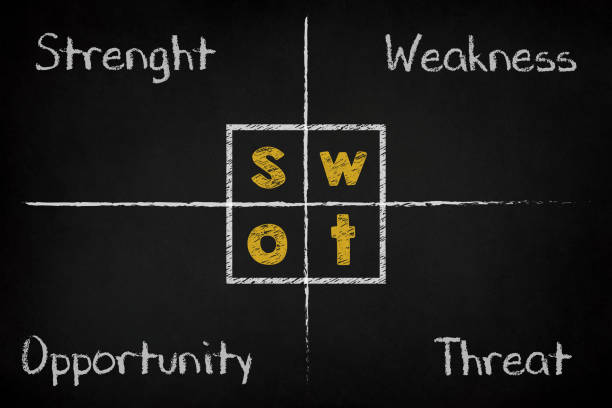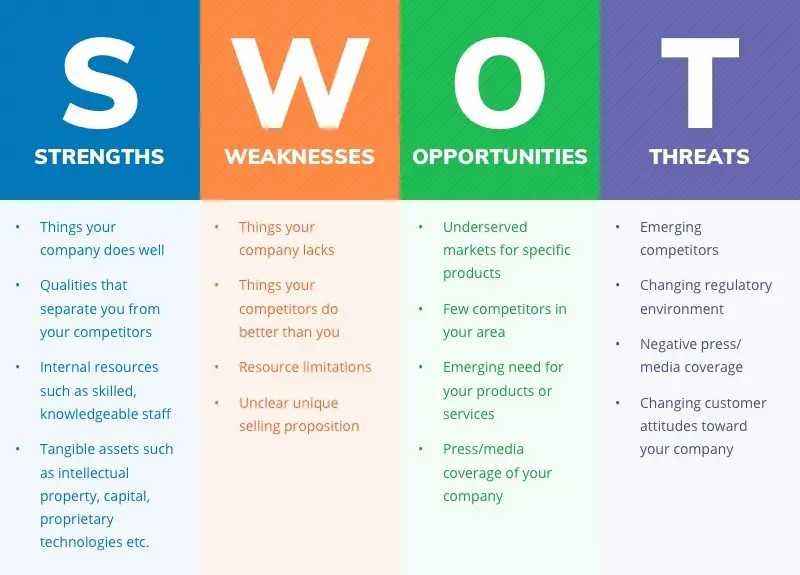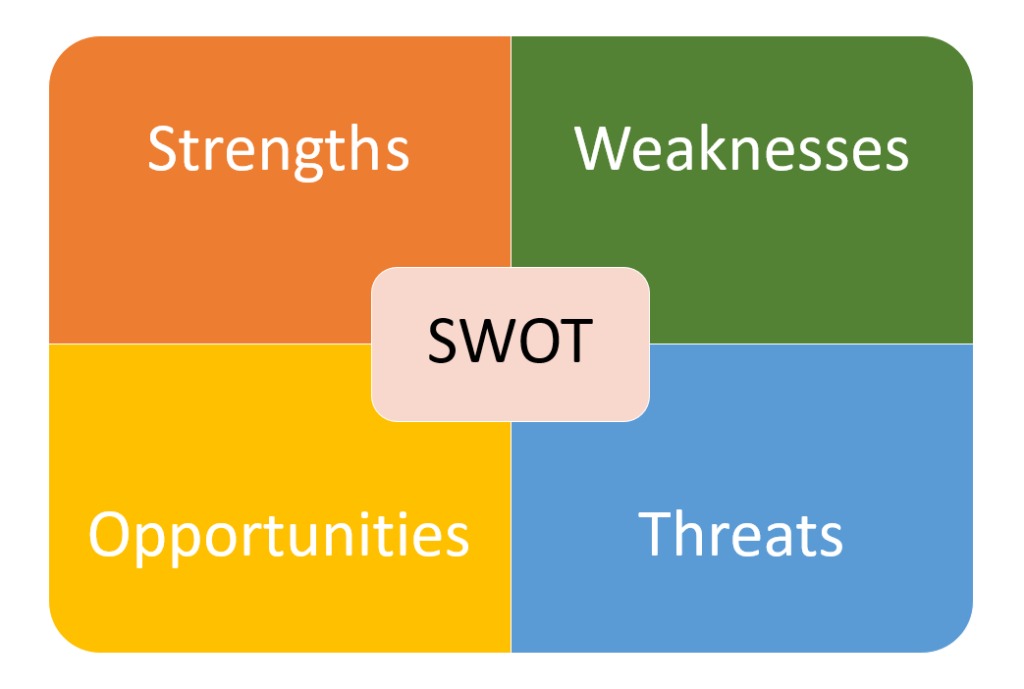Today we are going to explain what SWOT analysis is, tell you about the definition, history and components, also give you some tips on how to conduct one for your business.
The definition and history of SWOT
SWOT stands for strengths, opportunities, weaknesses, and threats. It is a type of corporate tool that can be useful for the company in crisis situations or moments prior to major changes.
This tool will allow you to know the real situation of your project, company, or organization and to analyze what could be the strategy to follow to improve the results. This way, the SWOT analysis will be very useful when making business decisions in a strategic way after having identified the internal and external factors to be taken into account.
This technique is attributed to Albert S. Humphrey in the 1960s in the USA and emerged during research aimed at discovering the failures of corporate planning. This resource became a revolution in the field of business strategy.
What is a SWOT analysis?

A SWOT analysis is a tool used to study the situation of a project, a company, or a person through a square matrix that includes internal factors (Strengths and Weaknesses) and external factors (Threats and Opportunities).
The objective of the SWOT analysis is to analyze the competitive advantages of the case under study (company, institution, etc.) by studying its own characteristics and the external characteristics of the market in which it is located.
The internal characteristics to be analyzed are the strengths and weaknesses. In these two quadrants, factors such as the availability of personnel resources, capital, assets, product quality, internal and market structure, among others, will be taken into account. The external characteristics to be included in the matrix are opportunities and threats.
What are the components of a SWOT analysis?
Weaknesses
Studying the internal weaknesses of the company or organization will make it possible to identify them in order to subsequently correct them. To begin with, you should ask yourself several questions such as: What disadvantages do you have compared to your competitors? Is our content of good quality? What could be improved? Is our sales network deficient?
Strengths
In this section of the matrix, the company should consider what its competitive advantages are. That is to say, what are the internal attributes that can allow it to gain an advantage over the rest of the competitors.

For this analysis, some of the initial questions may be: What do you do better than your competitors? Is our product innovative? What are the strengths of our social networks?
Threats
Threats are the negative factors identified in the environment that can be harmful to the company’s project. The ideal thing would be to design a strategy that can overcome those threats. Some of the questions we can ask ourselves for the study may be: What is the competition doing? Are there resource problems? What obstacles does the company face?
Opportunities
Opportunities are those contextual factors that, once identified by the company, can be exploited to become strengths. Some of the questions that can be asked for this study may be: What are the circumstances that improve the company’s situation? What market trends can favor us? What are the changes in life patterns? Are there new technologies that can be incorporated into the company’s work?
How to conduct a successful SWOT analysis?
The success of a SWOT analysis will depend on the questions we ask ourselves and the rigor in placing each element in the right place in the matrix. This is why it is important to make an initial reflection on what the company’s situation is and what we want to achieve with this analysis before we start dividing up the matrix.
In addition, it is worth explaining that it is not useful to carry out a single analysis; as with everything in corporate strategy, it is a question of trial and error. The ideal plan would be to carry out a SWOT analysis every time whenever the company is going to face new changes or projects, as this tool will help it to make decisions more efficiently, logically, and rigorously. Thus, it is also advisable to review the SWOTs from time to time to check the results obtained in that period of time or to detect possible changes, both internal and external.

Another factor that will influence the success of the analysis will be our own willingness to do it. It is important to be realistic and sincere in identifying the factors, not only our positive characteristics but also our weaknesses.
How to interpret your company’s matrix?
Once all the external and internal factors have been identified, the confrontation matrix must be made, which allows us to link the external factors with the internal characteristics identified. One option is to classify these relationships by giving each one a score, for example:
- High relationship: 10
- Medium relationship: 5
- Low relationship: 1
- No relationship: 0
Once all the data has been added up and analyzed, we will be able to clearly prioritize and see which are the strengths and opportunities that we can accentuate, as well as which are the main threats that we will have to overcome.
We must bear in mind that the SWOT analysis by itself will only serve to become aware of the reality of the business and the situation in which it finds itself. However, it will require further work in order to improve your company’s position in the market.
Example of a SWOT analysis
Pepe is a 35-year-old computer scientist who has worked all his life in companies related to his field of expertise. However, when he turns 35, one of his relatives passes away and leaves him the family bakery business and huge capital to continue running the business. Pepe decides to quit his job as a computer scientist and jump into the pool with this new business. Before embarking on this adventure, a good option would be to carry out a SWOT analysis to check where the business is starting from and what are the priorities to improve.
A possible SWOT could look like this:
Strengths:
- Quality facilities
- Product or service well positioned in the market
- Highly trusted and loyal customer relationship.
Opportunities:
- Ability to turn the business around and innovate the product.
- Ability to enter the digital market and door-to-door sales.

Weaknesses:
- Lack of staff
- Undefined business culture
Threats:
- Existence of two supermarkets on the same street as the bakery where customers can find similar bakery products at lower prices.





